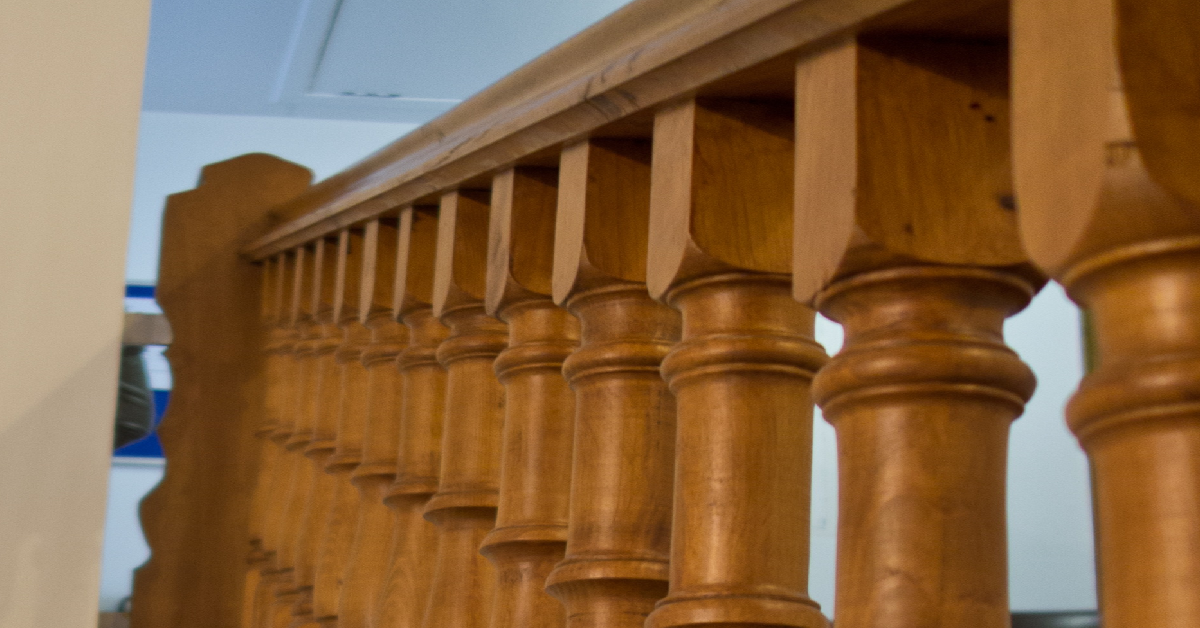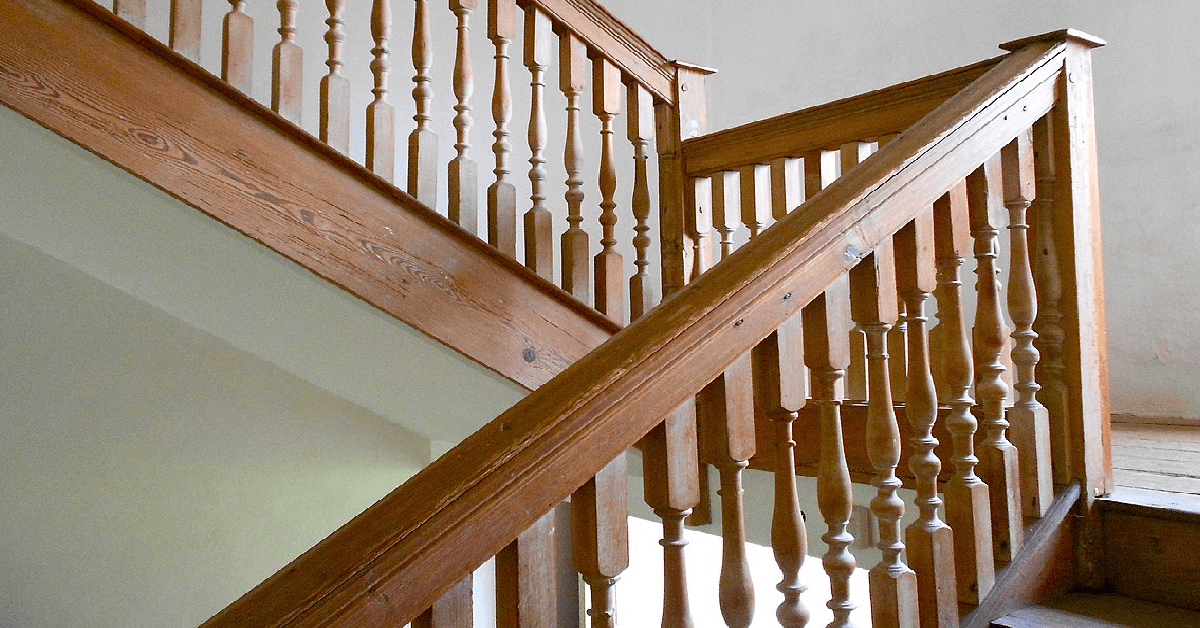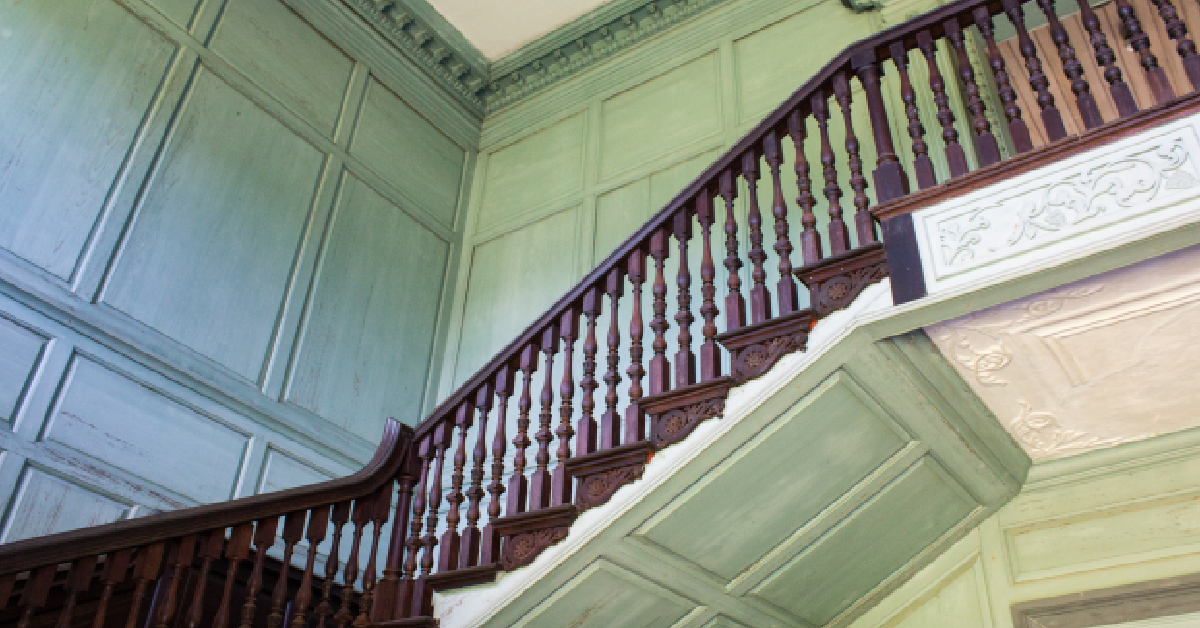It probably never happens anymore in newer homes, but you might find this phenomenon in older houses with staircases.
Sometimes, if you’re in an older home, you might notice a single baluster that is upside down. At first, it might seem like someone’s mistake, but in reality, it could be an intentional design.

If it’s intentional and not someone’s oversight, there are several potential explanations for why there is only one upside-down baluster in a staircase. The explanations range from practicality when building to supernatural ideologies.
Back in 2020, there was a post shared to a forum for landlords where one user was inquiring about why it seemed that in certain homes there was a common practice of installing one baluster upside down.
Someone from northwestern England commented, saying they heard from an old chippy – which is the UK slang for carpenter – that it was tied to a rather interesting superstition.

The comment read, “He says that it’s an old Scottish and borders ‘secret’ sign showing support for Bonnie Prince Charlie. The chippy’s tale is that there was indeed a superstition about an upturned bottom spindle stopping the devil from climbing a staircase to claim occupants on their deathbed.”
Besides being a superstition to keep evil from ascending a staircase, the commentator also mentioned that the single upside-down baluster was a sign amongst Scottish builders who were in support of Bonnie Prince Charlie’s failed attempt to claim the English throne back in the 18th century. As it turns out, the whole story involved an impotent road close to the English-Scottish border, which at the time was known as “The Devil’s Staircase.”

In fact, in the book, “Staircases: History, Repair and Conservation,” the author wrote that in the early 17th century, most staircases had balusters that were easy to remove, therefore it wasn’t uncommon to find that one of them had been turned upside down. Many claimed this was a good luck charm as it was often called the witch’s mark and was supposed to act as a means to keep evil spirits away.
But there is another superstition that was shared by a Facebook user on a post by HGTV and DIY Network host Scott McGillivray after he uploaded a picture of a staircase banister with a single baluster that was upside down. In his Facebook post he wrote, “One of these things is not like the other.”
This led to a flurry of comments from his followers, and amongst them, was the comment from Douglas Harpur. He wrote, “The carpenter recognized that only God was perfect, so he put one spindle in upside down to make his work imperfect.”
https://www.facebook.com/EverythingScottMcgillivray/posts/2986762528086388
It’s not just the UK that has this common practice in their old homes and buildings. In the US, some visitors to certain old government buildings might notice a slight difference, like the grand staircase between the second and third floors of South Dakota’s State Capitol in Pierre.
According to the South Dakota Historical Society, in his book, “The South Dakota State Capitol: The First Century,” author Marshall Dagaard explained that the building was built at the beginning of the 1900s, during a time when tradition believed that only God could attain perfection. Therefore, the inverted baluster is there to remind everyone that only God is perfect. And interestingly enough, it is also the third baluster from the right, lining up with the Holy Trinity.

Similarly, there is an upside-down baluster in the Wyoming State Capitol in Cheyenne. This one was built several decades before the one in South Dakota. Richard R. Gibson, author of “A Celebration of State Capitols,” explained the history, stating that Amish craftsmen added the flaw as a reminder that no one but God is perfect, according to the historical society.
Have you ever heard of these superstitions before? Have you ever seen an inverted baluster on a staircase before? Let us know!













